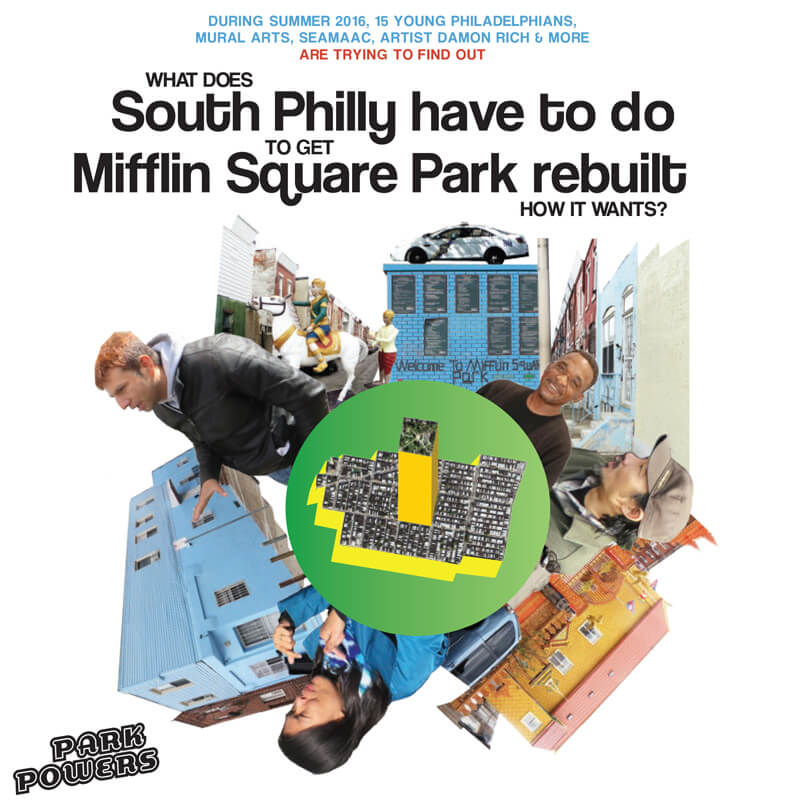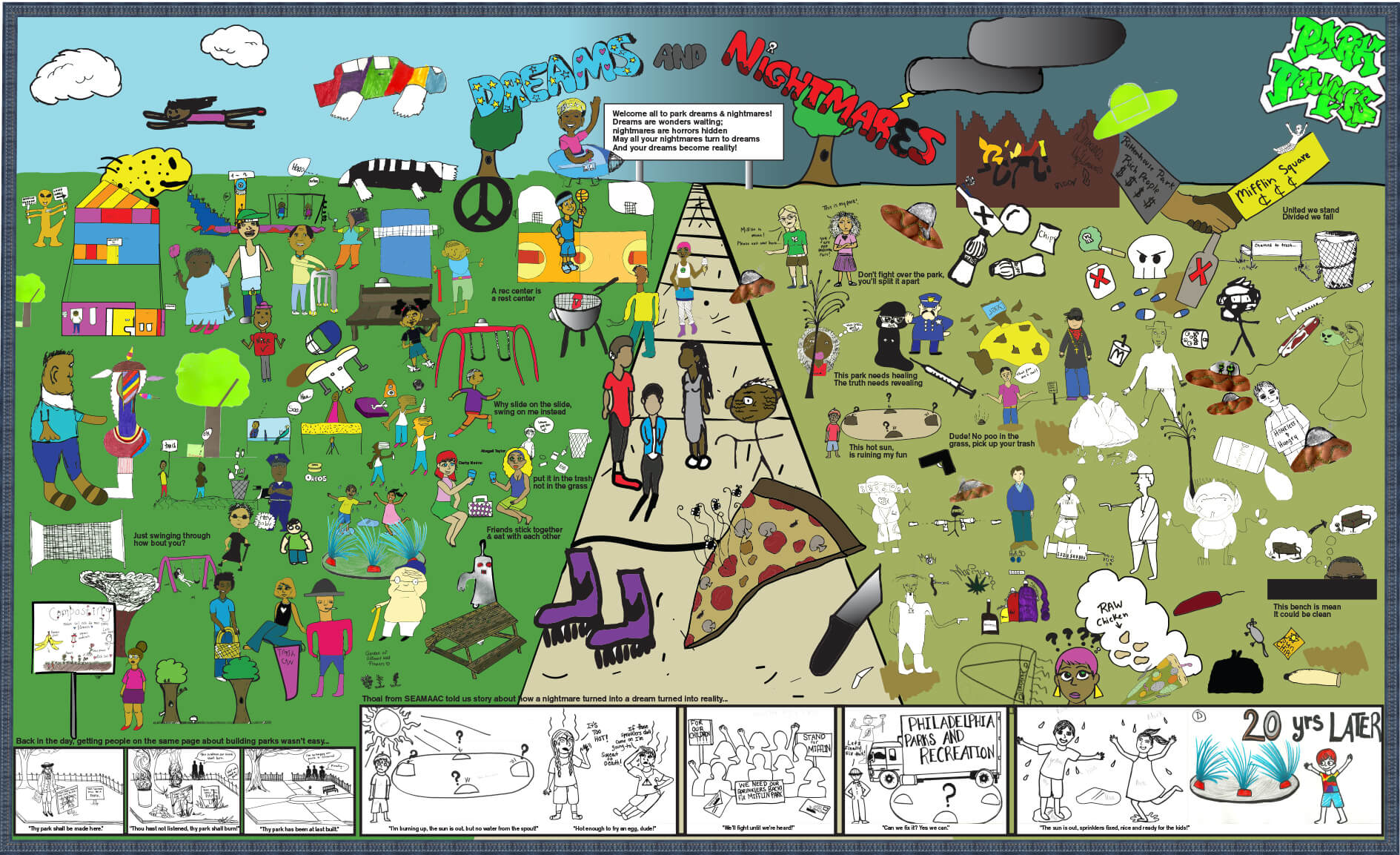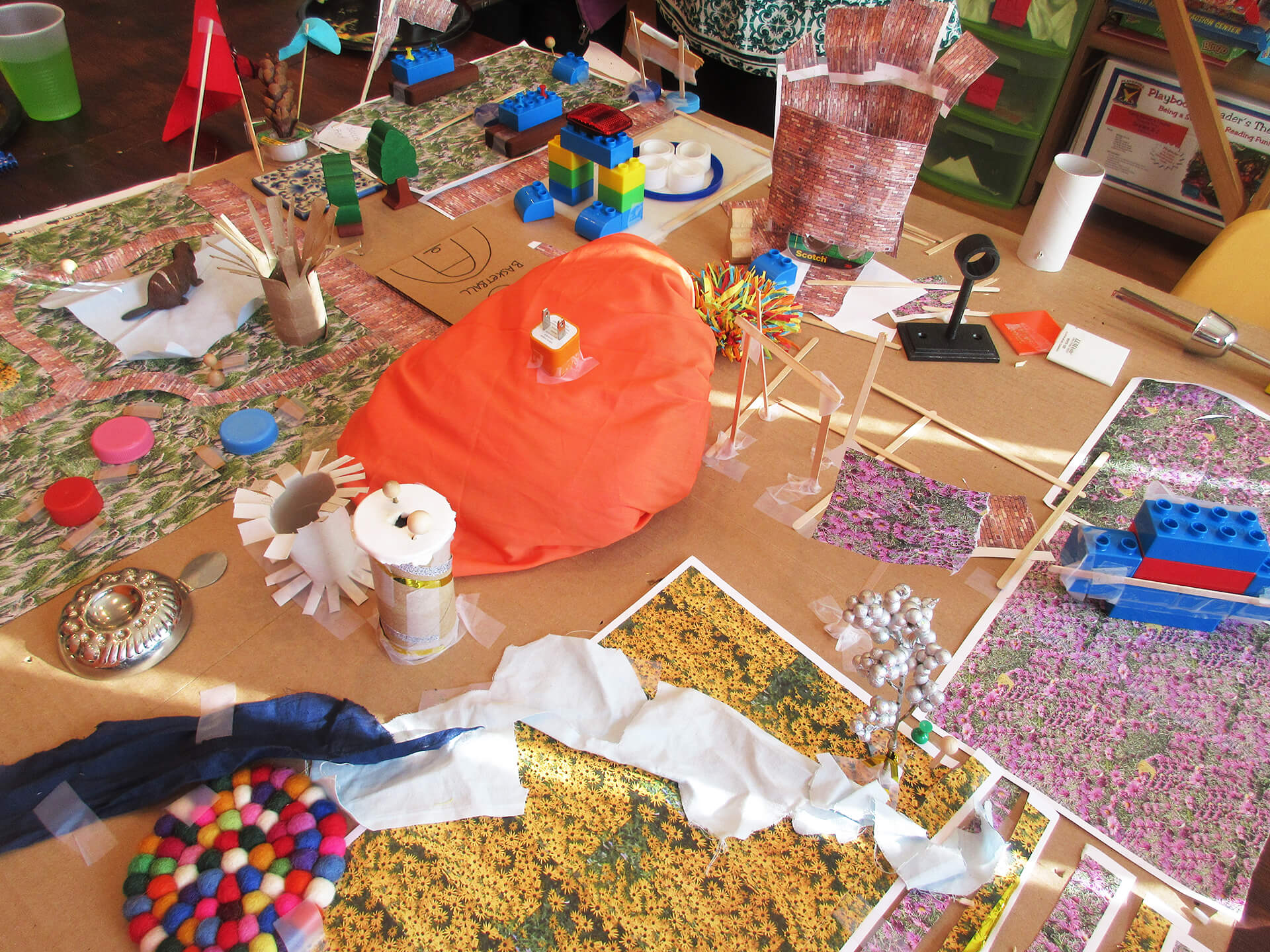The Mifflin Park Project
In Philadelphia Damon Rich's firm Hector works with the Mifflin Coalition–community organizations and city agencies concerned with a three-acre neighborhood park. It was built through eminent domain in the 1890s at the end of a trolley line in a then-Jewish neighborhood. In the ‘50s the city built a basketball court, and that's about all the investment they've made. Since the ‘70s the neighborhood is completely different: in addition to Irish and Italian residents and an older black community, people came from Vietnam, Cambodia, and Laos after the American war in Southeast Asia.

These groups have taken things into their own hands. They’ve created 2 ad hoc volleyball courts and two for takraw, foot volleyball. Damon calls it “repacking the suitcase,” where the suitcase, the park layout, had been packed in a hurry and not very well. Clouds of dust come from the volleyball courts to the elders playing cards, but they don’t want to move because they don’t want the little kids to see them gambling. Unlicensed food vending was a big draw both for locals and people across the city until three years ago, when, after gunfire in the park, the police got rid of the vendors. Of course that kills a lot of the positive activity.
As soon as you pull on one of the design factors–situating a bathroom or moving the sprayground–you have other political and social relationship issues. Damon says,
“We did something that I’ve found really valuable for many years–working with young people.”
In this case the fantastic mural arts organization in Philly brought in students from the federally funded Summer Youth Employment Program. The Mifflin Coalition charged the teenagers and Hector to investigate who makes decisions about parks and how other community groups have succeeded or failed in getting their parks rebuilt. The teens made large-scale drawings called “Dreams and Nightmares,” showing what they heard people were striving for and what they themselves imagined.

But since they’re teenagers and they have very dark productive imaginations, the other half is park nightmares, a tribute to the song “Dreams and Nightmares” by MC Meek Mill. An article by Alexandra Lange (LF ’14) cites the project, which the students called Philadelphia Park Powers.
The Coalition liked the artwork and asked Hector and the students to make materials, in 8 languages, to use for organizing to get the park built. Damon says, “It’s young people interpreting for their families and their neighborhood, and we want to do more of that.”

The funder, William Penn, insisted the parks department be at the table because they have to approve anything, which is smart, but sets up an understandable dynamic. Hector shares drawings that represent residents’ visions with partners at the parks department, and the parks department is concerned about their ability to deliver and maintain it. Damon reports, “Parks tells us, ‘our biggest concern is raising people’s expectations,’ and the Coalition says, ‘our most necessary goal is raising people’s expectations.’ It’s challenging but it’s the place where we designers can contribute something.”